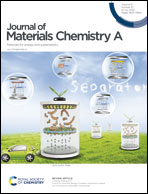Metallic nanosponges for energy storage and conversion applications
Abstract
In order to meet the current energy storage demands, the rational design of novel nanostructured materials is crucial for the improvement of electrochemical storage and conversion performance. Nanostructured materials have shown promising results in various energy harvesting systems, owing to their multifunctional properties such as a large active surface area, mechanical strength, catalytic ability, excellent ion diffusion, and electronic conductivity. To date, the library of nanostructured materials consists of diverse compositions ranging from oxides, dichalcogenides, carbides to graphene-based and lithium alloys with various morphologies such as zero-dimensional (0D), 1D, 2D and 3D nanomaterials. In particular, nanosponges have exhibited unusual three-dimensional architecture that provides rich surface defects and excellent structural stability resulting in improved catalytic activity. Additionally, the large conducting surface, electronic conductivity and pronounced crystalline phase stability of nanosponges have been utilized to improve the electrode performance drastically. Moreover, the unique sponge-like metallic porous network not only reduces the overall weight of the device but also decreases the consumption of metal usage. In this context, this review particularly highlights the recent progress in the synthesis and properties of noble metals and other metal-based sulphide, oxide, hydroxide and phosphide nanosponges, and their application in electrochemical storage and conversion devices.



 Please wait while we load your content...
Please wait while we load your content...